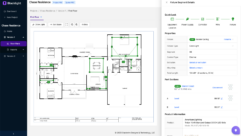Manufacturer And End-User Relationships
Manufacturers are more focused on end-users than ever before, creating some ground-shifting consequences for integrators.
WITHIN THE consumer retail chain, the manufacturer to end-user relationship is straightforward. Consumers buy a product and later go back to the manufacturer for support in most cases. However, in the integration trades such as pro AV and the bricks-and-mortar building trades, the scenario is a bit more complicated.
In the building industry, manufacturers sell products to contractors who then resell them to the end-user. Most often the products are sold along with the labor to install them. In the past, this has kept the end-user at a distance from the pro AV manufacturer, but now that distance has been replaced by more direct ties.
In the tradition
In pro AV, this separation has traditionally been fairly clean. In the days of all-analog AV systems, the switchers, projectors, distribution amplifiers, and control systems were sold almost exclusively through integrators. If end-users needed support, they called the integrator rather than the manufacturer. In part, this was usually because the end-user didn’t have the expertise to troubleshoot or repair the equipment, much less the overall system.
This relationship model continues today in many cases, and has worked well for a long time. But now there are signs of change, and some compelling trends have put more pressure on this singular, isolated path of interaction between end-users and manufacturers.
As the pro AV industry grew into the digital age and manufacturers saw more business opportunities as well as more competition, they began to market and provide support up the AV food chain. This meant that they needed to interact more with consultants to market to them, so their product would be more likely to show up in project specifications. And in today’s pro AV industry, I’m happy to report that “consultant liaison” doesn’t get as many blank stares from manufacturers as it used to.
While integrators and consultants were getting the attention of manufacturers, the end-users were also becoming a bit more demanding, at least in terms of support. Many AV systems have been installed over the years, and end-users have become savvier and more responsible for their own systems. This meant that they needed more direct help from the manufacturers to operate, troubleshoot, and maintain their systems, and most manufacturers have stepped up to the plate.
In addition to support requirements, the manufacturers saw a growing opportunity to strike even higher in the food chain with their marketing efforts — specifically at the end-user.
Will the real end-user please stand up?
So exactly who is this end-user? End-users generally fall into three categories: administrative, “real,” and technical. The administrative end-users typically have the purse strings and/or the go/no-go decision making power. They manage budgets and contracts, and write checks. They can also be a source of influence. Particularly with executives, if they want a particular new toy, they have a good chance of getting it. The “real” end-users are the presenters, teachers, executives, and workers who actually use the installed systems to communicate. Attention to these two groups is manifested in efforts such as advertisements for projectors in airline magazines and other non-technical publications.
Yet it’s the technical end-users — often called “technology managers” — that are probably the highest target of interest for manufacturers because this group manages the technology, sets equipment standards for their organizations, and often writes the requests for proposal (RFPs) that start the design and integration process. This is where we see manufacturer representatives specifically designated for particular end-user vertical markets or national accounts, even though there’s no direct sale to their target audience.
In-house integration
What’s been happening in recent years, however, has added a little more tension in the pro AV market — at least between manufacturers and integrators. As the AV industry has grown, owners’ AV organizations now have larger and more technically capable staff to complete some AV design and integration projects entirely in-house. They only need a dealer to sell them the equipment, most of which is now simply a mouse click away. Online resellers abound, and anyone can buy almost any pro AV device — including installation projectors and large switchers that each cost tens of thousands of dollars — through the Internet. And that’s one big mouse click that an integrator may never see. The integrator, despite its potential value-add, may have lost a hefty sale and a potential profit.
This trend has led to two major results. First, manufacturers now need to approach end-users with nearly all of the marketing and technical support they’ve typically only offered to consultants and integrators, without inadvertently alienating their traditional channel partners. The only thing missing in this new relationship is the direct sale to end-users, which — at least in the near future —probably won’t happen, although online resellers with low margins come pretty close.
The second result, which many integrators are already feeling, is more competition at the lower end of the market where the end-user organizations are taking more of the design and installation in-house. The traditional value-add of expertise and support may not be as necessary as it used to be with some buyers of smaller systems, although large systems will continue to be good business for pro AV providers. And oddly enough, integrators may still end up competing with their own client’s in-house crew as manufacturers have to walk the tightrope between the two.
Whatever the outcome, as pro AV continues to evolve both technologically and philosophically, manufacturers won’t be left out of the turmoil. And in the process, the changes in their relationships with end-users will affect the rest of us, too.
Tim Cape is a contributing editor for Pro AV, the principal consultant for Atlanta-based technology consulting firm Technitect LLC, and co-author of “AV Best Practices,” published by ICIA. He’s an instructor for the ICIA Audiovisual Design School and an active member of the consultant’s councils for both ICIA and NSCA. Contact him at [email protected].










